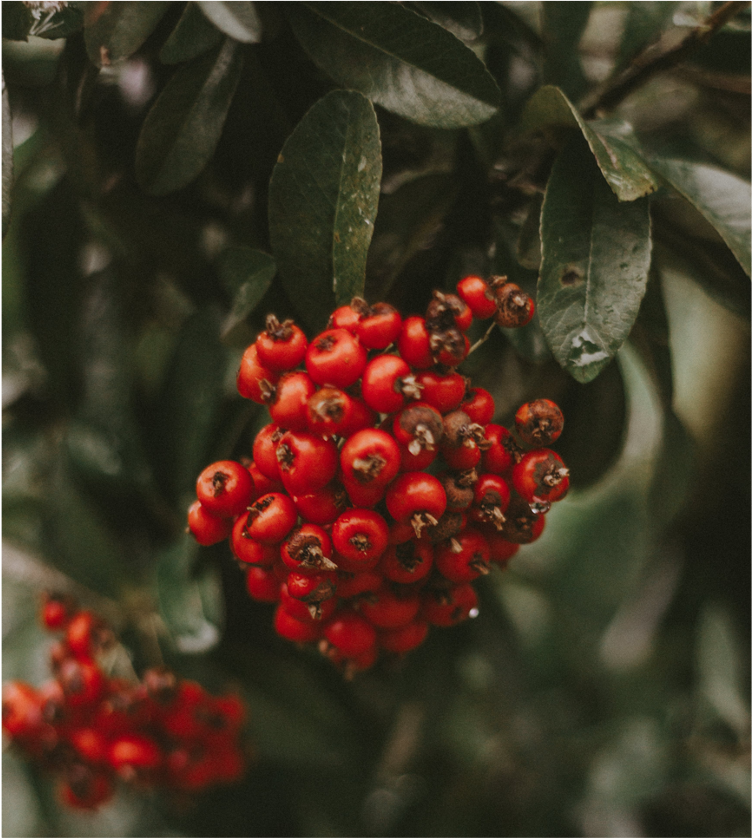By Dr. Leigh Siergiewicz
Hawthorn, or Crataegus spathulata, is a small-tree member of the rose family, native throughout the northern hemisphere. Hawthorn has smooth, gray bark, and most but not all varieties have sharp thorns on the stems. The flowers can be white or pink in springtime; they have berry-like “haws” that range from red to purple; and its leaves are small, serrated lobes that vary slightly among varieties.
Hawthorn is most commonly known as a medicine for cardiovascular conditions; however, it is also used for nervousness, restlessness, improving attention span, digestion, allergies, autoimmunity, and emotional grief.
Hawthorn contains antioxidants that help maintain healthy blood vessels and the heart, making these structures more resilient for healthy aging. It can be used as part of a whole-person treatment to improve all varieties of heart conditions, including both high and low blood pressure. It can reduce LDL or “bad” cholesterol and increase HDL or “good” cholesterol.
Some sources suggest using hawthorn leaves or flowers, while others suggest the best medicinal part is the berry, which should be harvested around now in late October or early November. Renowned herbalist Matthew Wood recommends his preferred preparation as a tincture prepared from the haws soaked in brandy (tinctures usually soak for a month or longer). Hawthorn can also be prepared as a tea with any of the edible parts. Best results are achieved when taken over a longer period of time; hawthorn is typically not used acutely.
There are numerous scientific studies that look at the effectiveness of the Crataegus genus, and many find it helpful for various conditions; however, more study would be wonderful. The large variety in the genus and the different preparations of the plant and its parts make it difficult to compare its effectiveness and ideal usage from a scientific standpoint. However, the extent of use across the cultures where hawthorn is native dates back centuries, and establishes this plant firmly as an important remedy for any natural health practitioner.
A 2008 systematic review and meta-analysis of randomized, double-blind placebo-controlled studies found that hawthorn preparations are helpful for patients with chronic heart failure. The meta-analysis included 10 studies and 855 patients and found that fatigue, exercise tolerance, and shortness of breath were all improved over placebo with hawthorn treatment (used alongside conventional standard of care).
Hawthorn is generally safe and well tolerated, side effects are uncommon and usually only mild to moderate. However, anyone currently taking any kind of cardiac glycoside medication for arrhythmias or other serious heart conditions should seek medical supervision if you wish to try hawthorn.
Daniele, C., Mazzanti, G., Pittler, M. H., & Ernst, E. (2006). Adverse-event profile of Crataegus spp.: a systematic review. Drug safety, 29(6), 523–535. https://doi.org/10.2165/00002018-200629060-00005
Pittler, M. H., Guo, R., & Ernst, E. (2008). Hawthorn extract for treating chronic heart failure. The Cochrane database of systematic reviews, (1), CD005312. https://doi.org/10.1002/14651858.CD005312.pub2
Tilgner, S. (2009). Herbal medicine: From the heart of the Earth. Wise Acres.
Wood, M. (2008). The Earthwise Herbal: A Complete Guide to Old World Medicinal Plants. North Atlantic Books.

